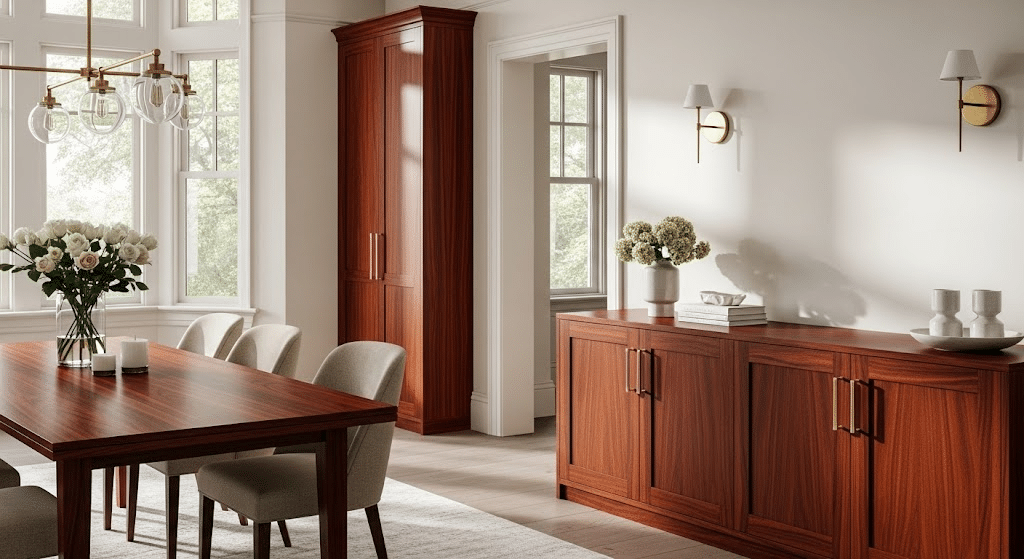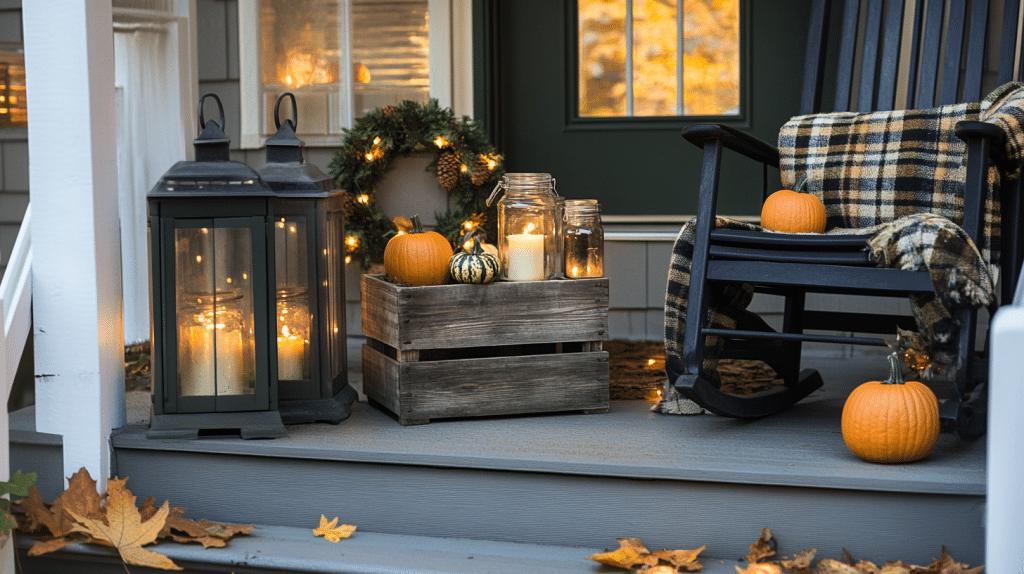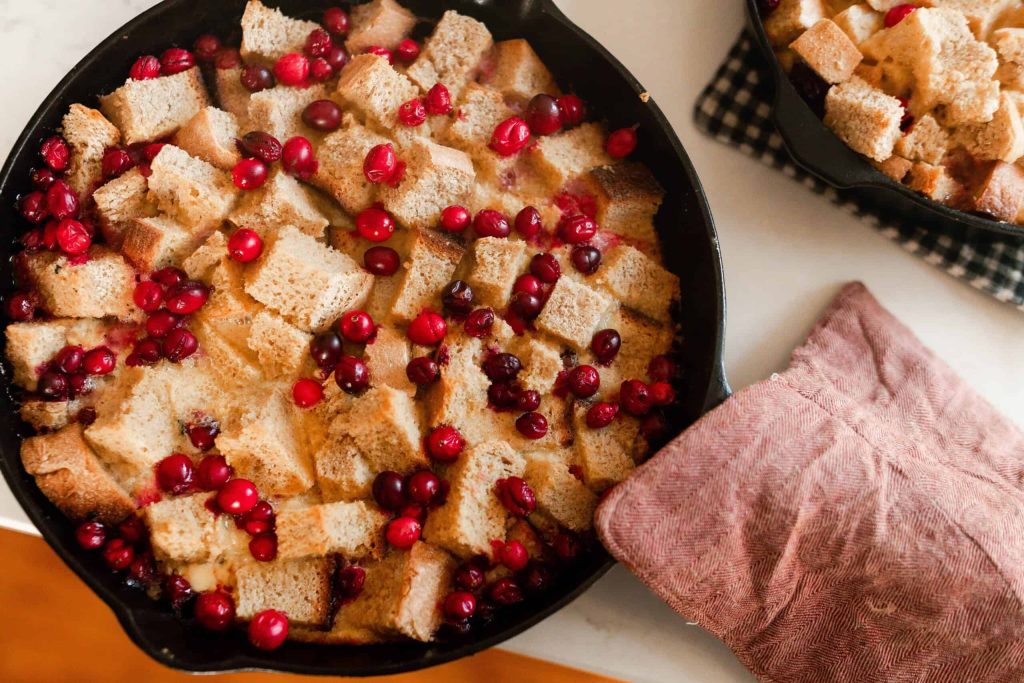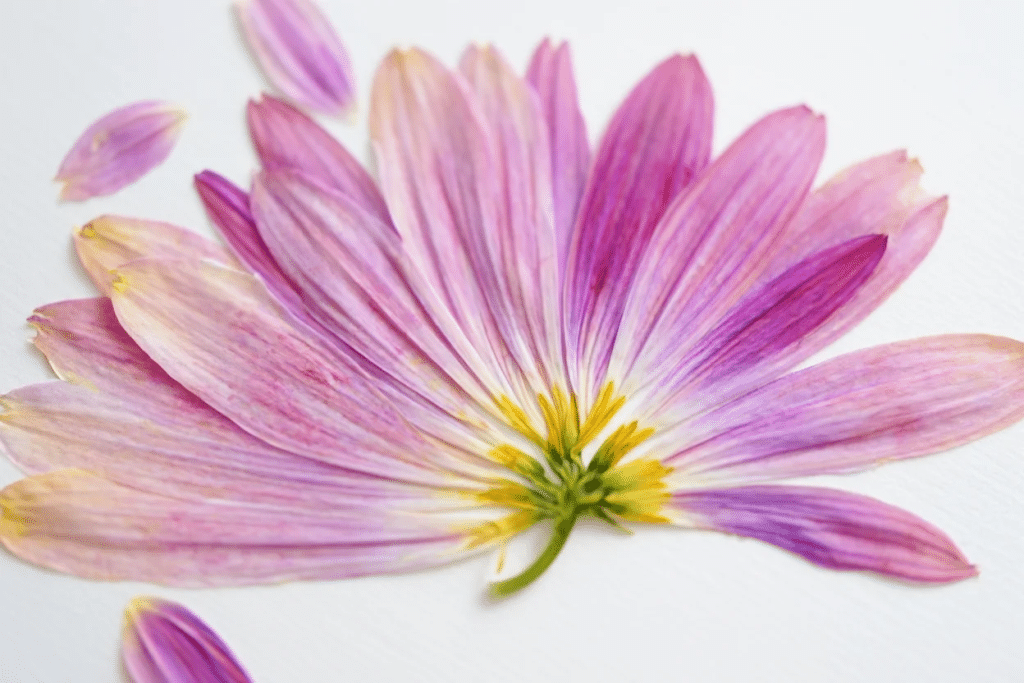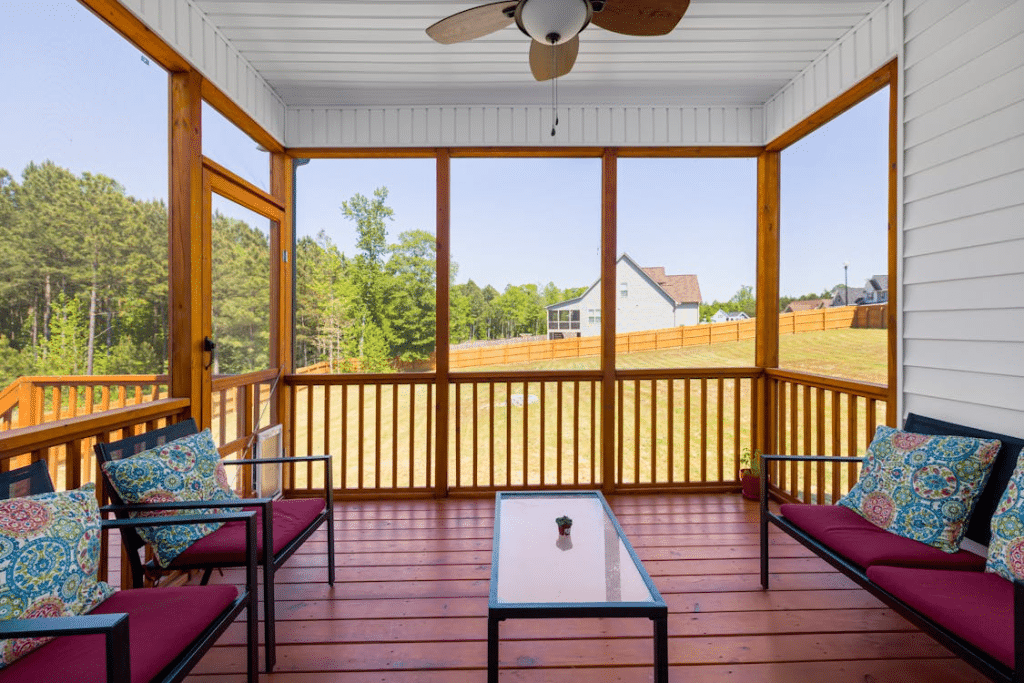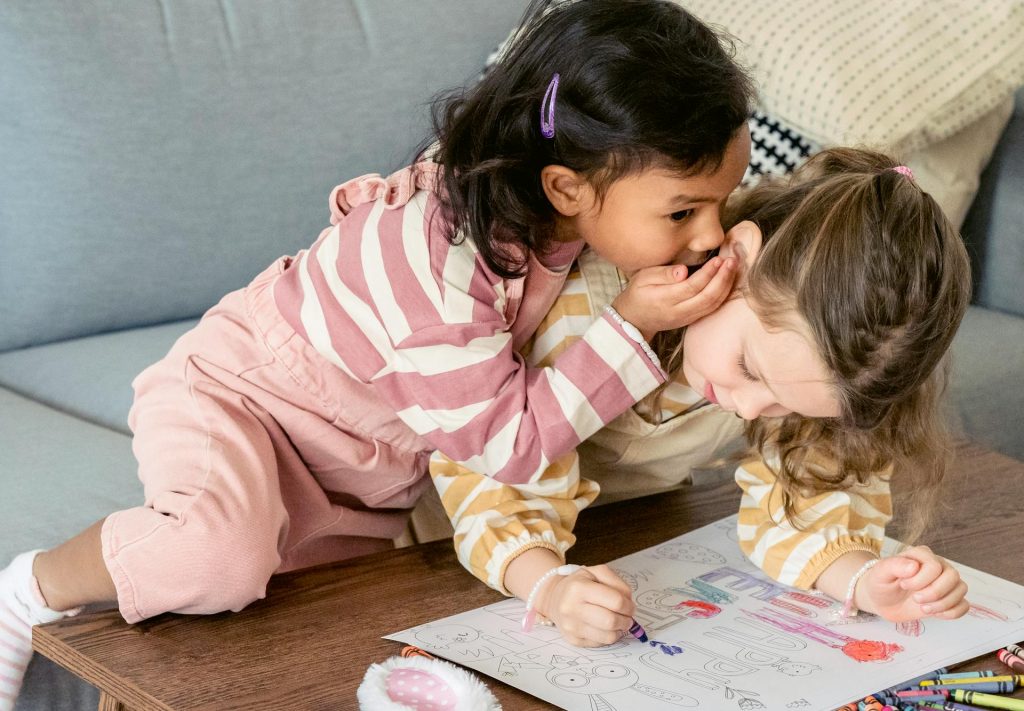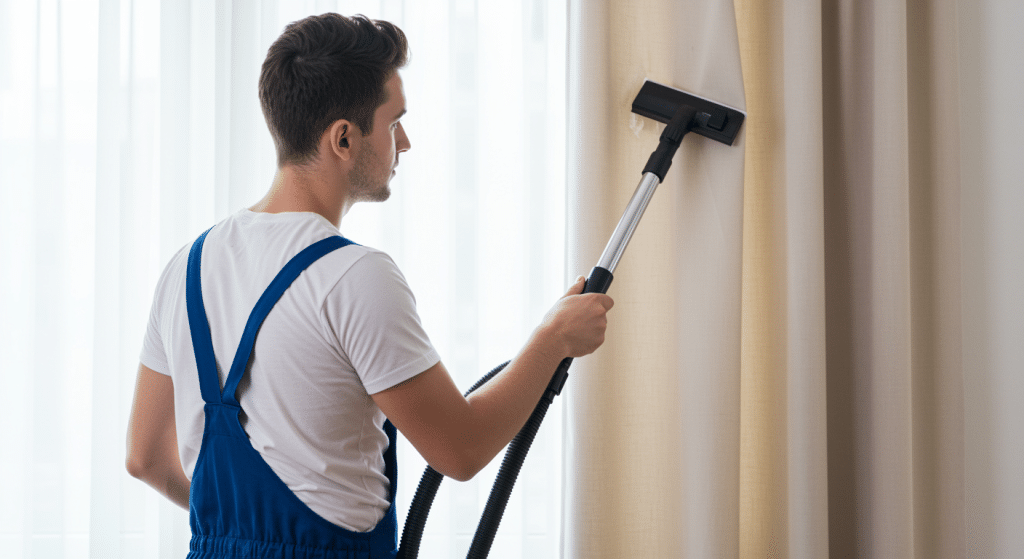Have you ever wondered what color is mahogany wood and why it commands such respect in the furniture world?
Having worked extensively with various woods, I can say nothing quite matches mahogany’s rich, warm tones that seem to shift and change before your eyes.
Mahogany isn’t just one color; it spans a spectrum of reddish-brown hues, from light pinkish tones to deep burgundy shades.
In this blog post, I’ll reveal what makes mahogany so special, how its color evolves over time, and practical tips for incorporating this beautiful wood into your projects.
What Color is Mahogany Wood?
Mahogany wood ranges in color from medium brown to deep reddish-brown hues. The color can vary based on factors like:
- The specific mahogany species (e.g. Honduran, Cuban, African)
- Age of the wood
- Exposure to light and air over time
Mahogany often has a straight grain pattern with occasional waves or ripples. Sapwood tends to be paler, while the heartwood is prized for its rich, warm reddish tones.
The Grain Pattern and Texture of Mahogany Wood
When I run my hand across a piece of genuine mahogany, the texture feels smooth and consistent.
What really catches my eye is how the grain interacts with light. If you ever wonder what color is mahogany wood in different lighting, you’ll notice subtle shifts in its reddish-brown hues.
I’ve noticed that genuine mahogany has this refined, uniform grain that’s quite different from substitutes like Philippine mahogany, which often shows more irregular patterns and coarser textures that don’t capture light or the true color of mahogany wood the same way.
| Attribute | Value/Description |
|---|---|
| Hex Code | #C04000 |
| RGB Values | 192, 64, 0 |
| Primary Undertone | Rich red (younger wood) |
| Highlight Tone | Auburn (visible in direct light) |
| Depth Tone | Deep burgundy (in aged mahogany) |
| Base Undertone | Grounded brown |
| Color Family | Warm earth tones |
Where does Mahogany Wood Looks Best?
I’ve found that mahogany truly shines in certain settings where its rich color can be the star. The wood seems to belong in spaces that appreciate its natural warmth and character.
Ideal Settings to Use Mahogany
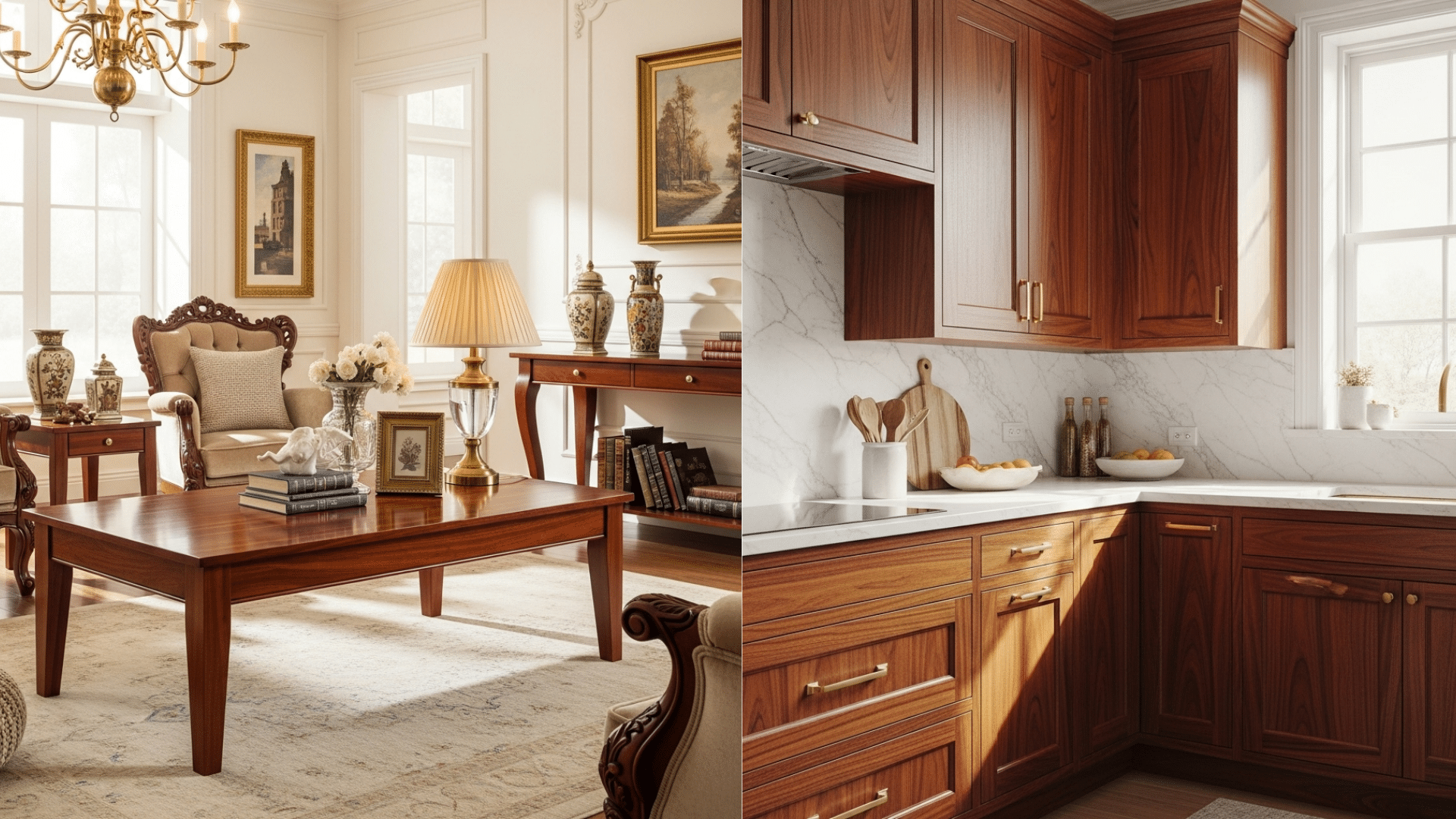
- Luxury interiors where quality matters most.
- Antique furniture pieces that need to make a statement.
- Kitchen and bathroom cabinetry for timeless appeal.
- Musical instruments, especially guitars, where tone and beauty matter.
The color combinations I recommend work beautifully with mahogany’s warm undertones.
I’ve seen stunning results when pairing it with creams that soften the intensity, soft greys that provide balance, deep navies that create drama, and forest greens that complement the natural wood tones.
Interior Styles That Love Mahogany
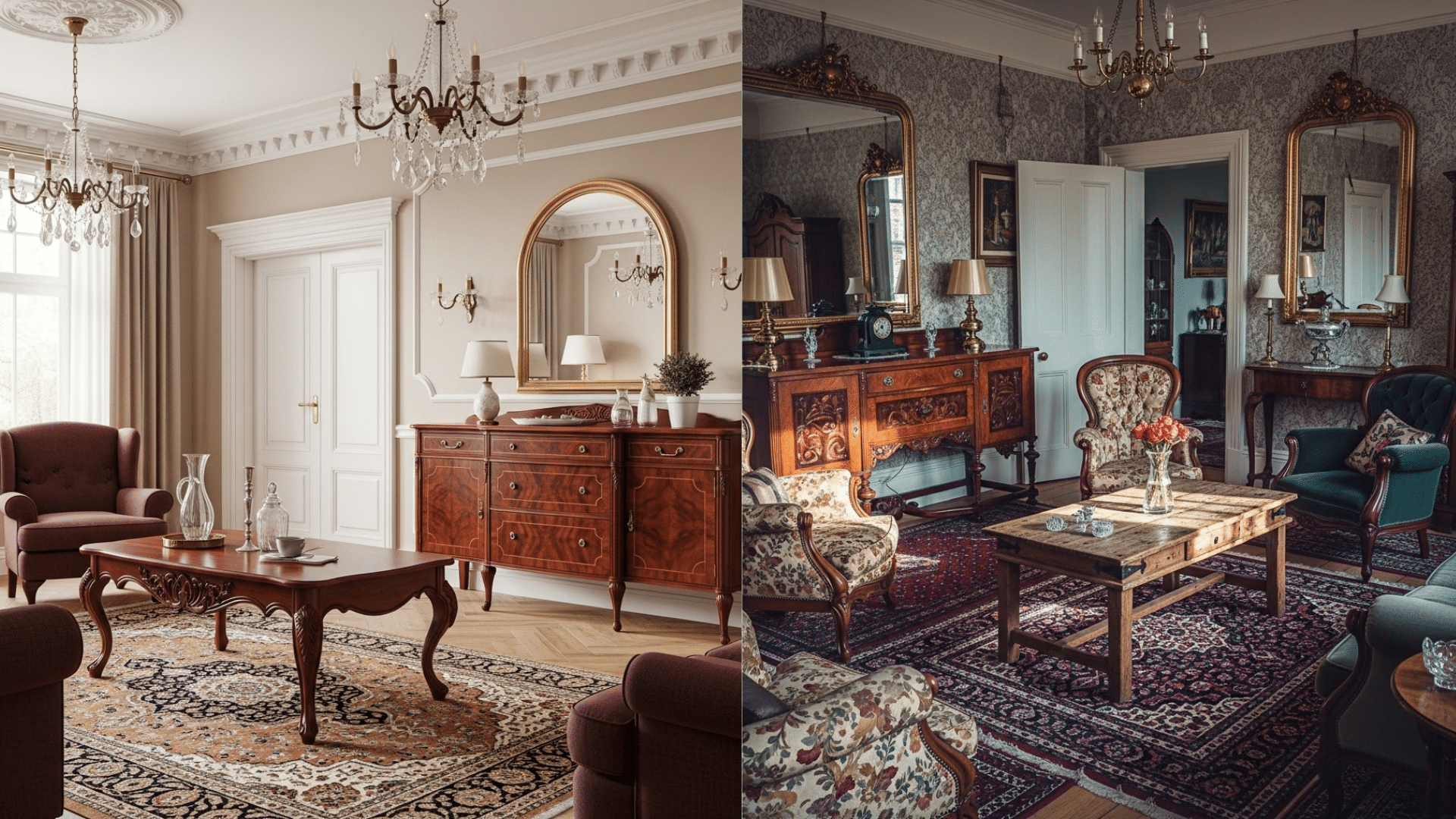
Mahogany is beloved in interior styles that emphasize timeless elegance and craftsmanship.
Classic and vintage designs, such as those found in colonial homes, showcase mahogany’s rich, reddish-brown tones and intricate detailing.
Transitional interiors also favor mahogany, blending its traditional warmth with contemporary elements for a balanced, refined look. This versatile wood remains a favorite for creating spaces that feel both enduring and refined.
Mahogany-Inspired Color Palette Combinations
I love creating color palettes around mahogany because it’s such a versatile base. The key is balancing its richness with complementary tones that either soften or enhance its natural warmth.
My Favorite Curated Palettes:
- Mahogany + SW Ivory Lace + brass for timeless luxury
- Mahogany + SW Sage Green + cream for natural harmony
- Mahogany + Benjamin Moore Kendall Charcoal + gold for dramatic class
- Mahogany + Benjamin Moore Soft White + copper for warm contrast
When I’m coordinating colors, I typically use warm whites or soft grays on walls to let mahogany furniture shine.
For upholstery, I lean toward cream, sage, or deep navy fabrics. Metal finishes work best in warm tones – brass, copper, or oil-rubbed bronze complement mahogany beautifully.
Paint shades like mahogany:
1. Behr Cherry Cola
2. Benjamin Moore Dinner Party
3. Benjamin Moore Barn Red
4. Sherwin Williams Polished Mahogany
Modern and Minimalist Tips:
Use mahogany as a single statement piece rather than overwhelming the space. Pair it with clean white walls and simple black metal accents. Keep other wood tones to a minimum, letting mahogany be the only warm element in an otherwise cool, streamlined room.
Comparing Mahogany with Similar Wood Tones
I often get asked about the differences between mahogany and other rich wood tones. Each has its own personality, and knowing these distinctions helps me choose the right wood for each project.
Mahogany vs Cherry
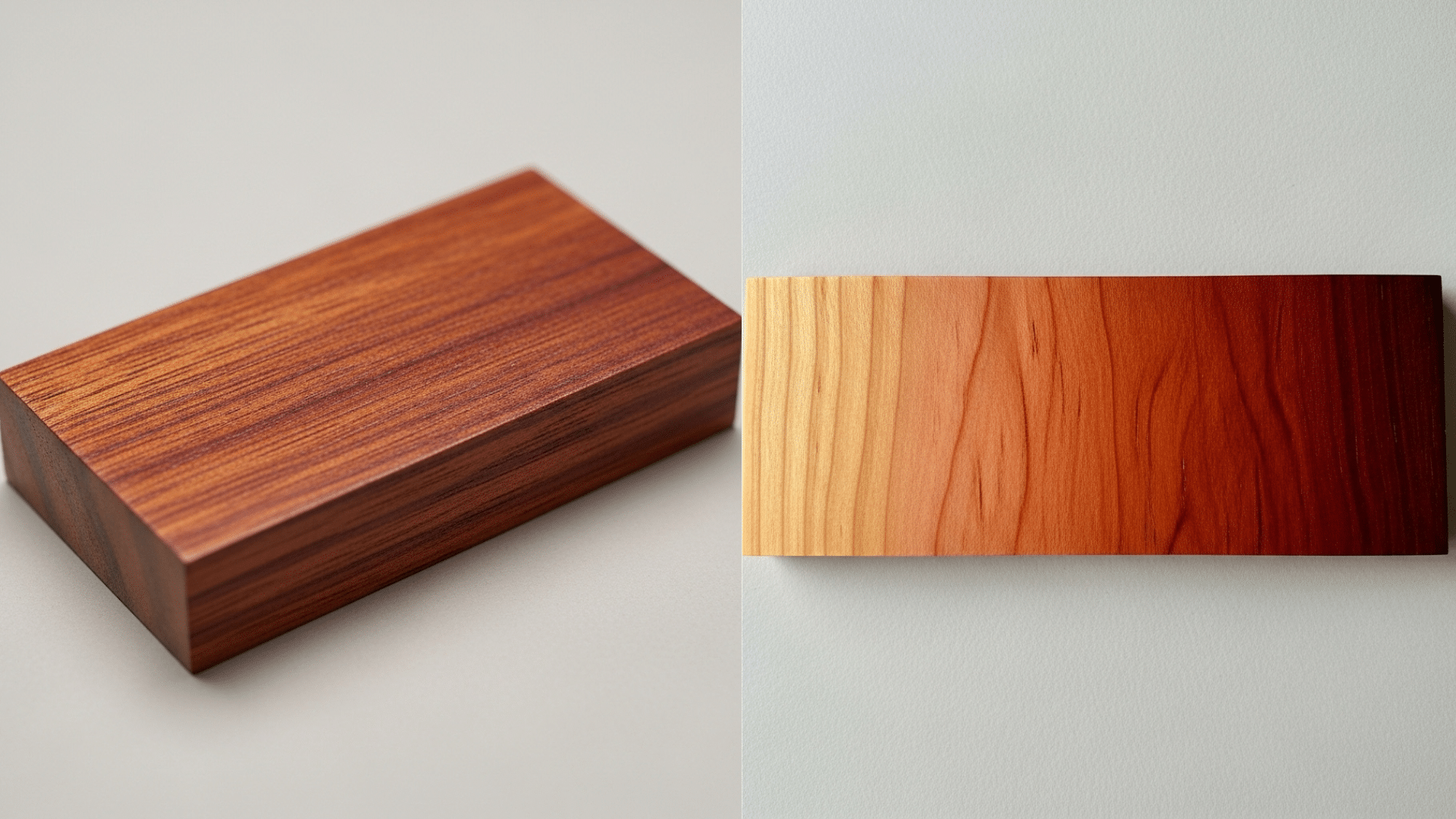
When I work with mahogany, I notice its consistent, deep reddish-brown tones that stay stable over time, giving my projects a classic, luxurious look. The grain is usually straight and even, resulting in a smooth, uninterrupted surface.
In contrast, cherry starts out lighter, almost a pinkish-brown, and darkens dramatically as it ages, developing a rich, deep red patina. Cherry’s grain is finer and often shows more character marks and subtle waves, adding visual interest and warmth to furniture and cabinetry.
Mahogany vs Walnut
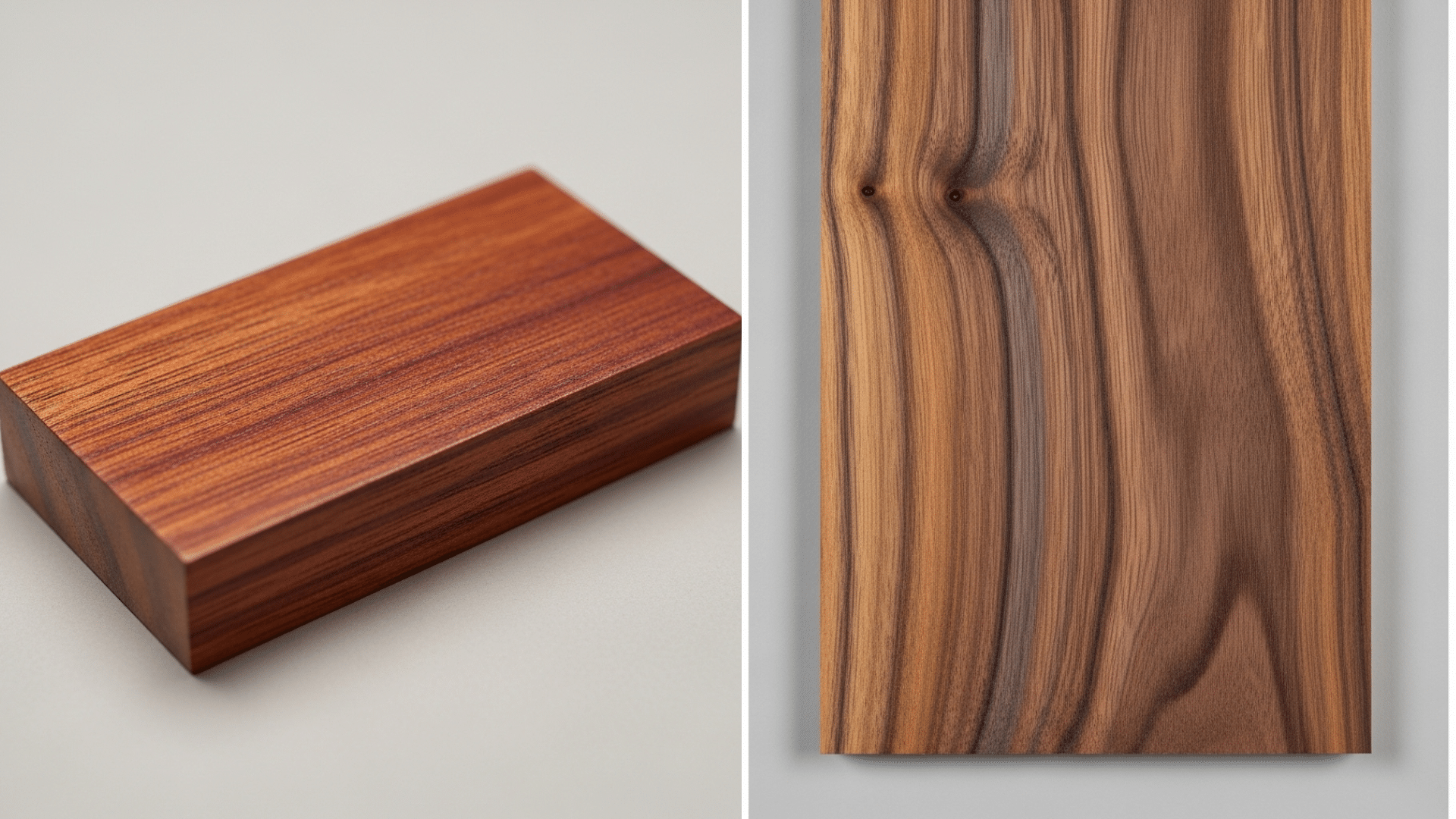
To me, walnut stands out for its rich chocolate-brown color, sometimes with purple undertones, and a grain that’s bold and varied, often swirling or figured. Mahogany keeps to the red-brown family, offering a more uniform and subdued appearance.
While both are prized for fine woodworking, I find walnut’s dramatic grain and darker hues create a more contemporary or striking piece. In contrast, mahogany’s even pattern and warm red tones lend a timeless, stately feel.
Mahogany vs Teak
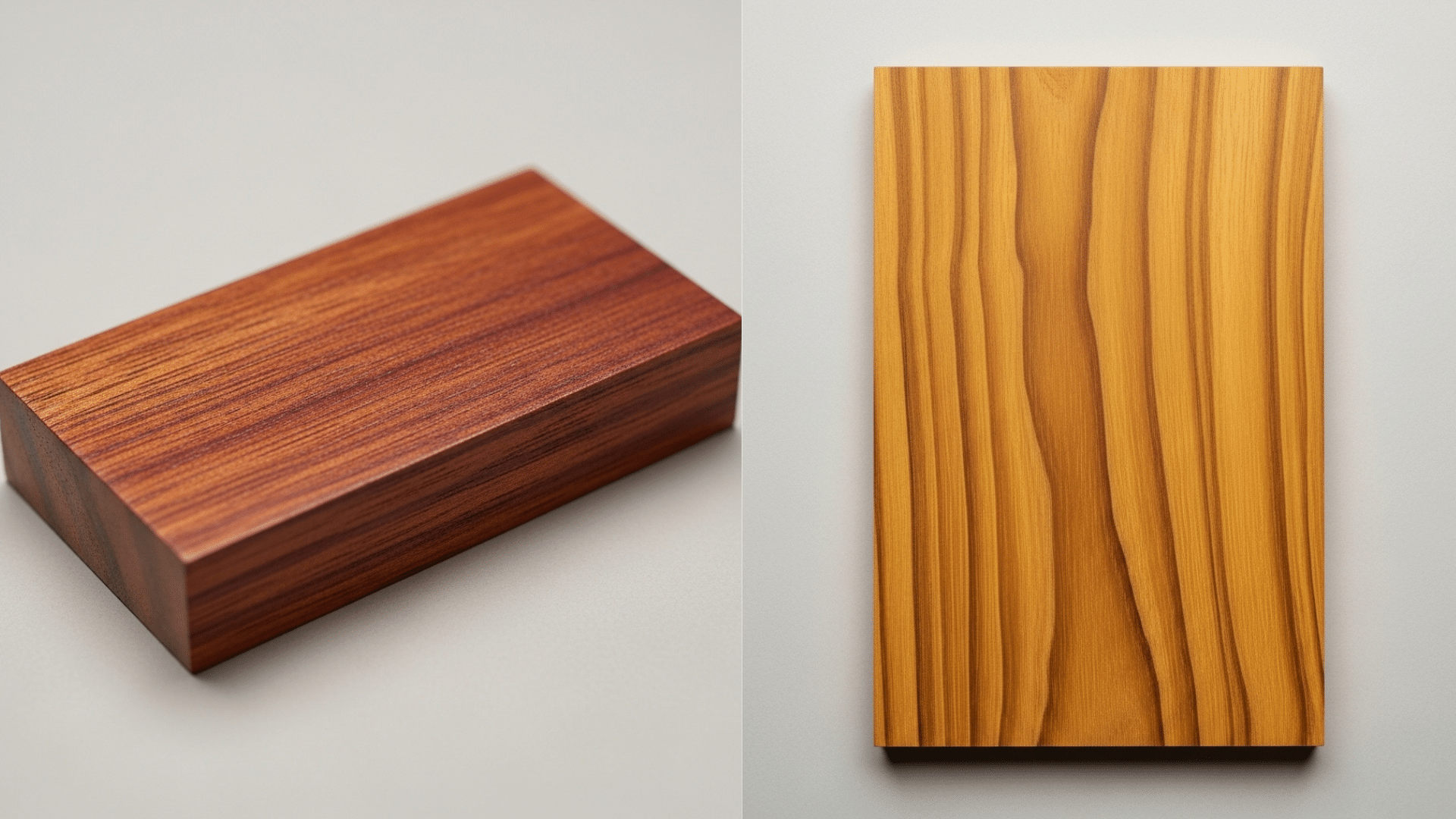
When comparing mahogany and teak, I appreciate teak’s golden-yellow undertones, which eventually weather to a silvery-gray if left unfinished outdoors. Mahogany, however, maintains its warm red character throughout its life, deepening slightly with age but never losing that signature reddish glow.
Teak’s oily texture and color shift make it ideal for outdoor use, while mahogany’s steady warmth suits classic interiors and heirloom furniture.
Mahogany vs Rosewood
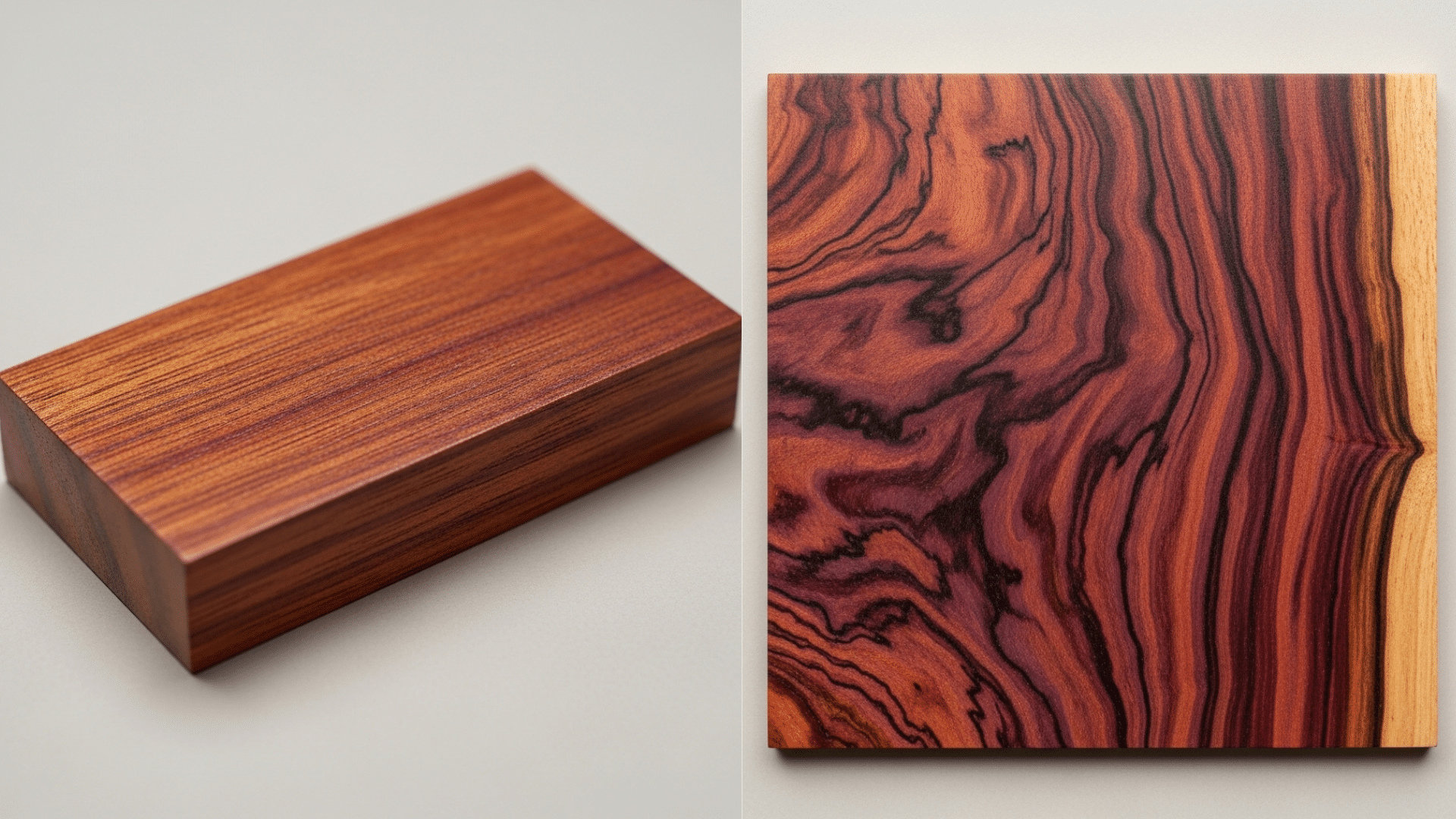
Working with rosewood, I’m always struck by its dramatic, dark purples and blacks running through the grain, creating a bold, exotic appearance. Mahogany offers more consistent, warmer reddish-brown tones with a straighter grain, giving a refined and elegant look.
While rosewood is chosen for its striking visual impact, especially in musical instruments and luxury items, mahogany’s uniformity and warmth make it my go-to for traditional, high-end furniture.
How to Identify Mahogany Wood?
To identify mahogany wood, look for these key features:
- Color: Reddish to pinkish-brown hues that darken over time to a rich reddish-brown.
- Grain: Straight, fine, and mostly uniform with few knots or voids; may show a subtle wavy or curly pattern.
- Texture: Smooth and slightly oily when polished, displaying a red sheen.
- End grain: Often shows rows of small reddish-brown slits called “ripple marks” (marginal parenchyma), typical of true mahogany species (Swietenia genus).
- Durability: Known for good stability, workability, and moderate rot resistance.
Real mahogany is denser and more stable than many lookalikes but varies in shade and grain depending on growth conditions.
Common Misconceptions About Mahogany’s Color
I’ve encountered many myths about mahogany’s color over the years, and want to set the record straight on these common misunderstandings.
1. It’s not always deep red: Fresh mahogany actually starts quite light, often with pinkish or yellowish tones that develop into richer colors over time through natural aging and light exposure.
2. It’s not the same as dark cherry: While both woods can appear reddish, mahogany maintains more consistent brown undertones, whereas cherry tends toward pure red as it ages and can become much darker.
3. Lighting completely changes its appearance: I’ve seen the same piece of mahogany look golden brown in warm light and deep burgundy under cool lighting, which often confuses people about its “true” color.
4. Stain isn’t the main color factor: Many people think mahogany gets its color from staining, but the natural wood itself provides most of the rich tones, with stains only enhancing what’s already there.
5. Different species of mahogany exhibit distinct color characteristics: African, Honduran, and Philippine mahogany each have their own unique color profiles, so there’s no single “mahogany color” that applies to all varieties.
Concluding
After years of working with mahogany, I can confidently say that understanding what color is mahogany wood helps appreciate its dignified and versatile nature.
Its warm character adapts beautifully to both subtle accents and bold statement pieces, fitting any design vision.
Consider how mahogany’s rich color palette could enhance your space, whether starting small with an accent piece or going bold with cabinetry.
Choosing mahogany means selecting a wood that only becomes more beautiful with time, bringing lasting warmth into your home.


